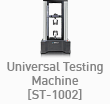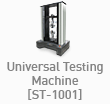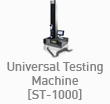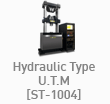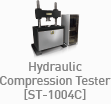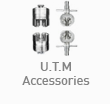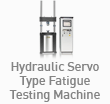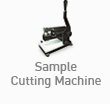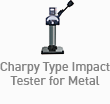| [ACCESSORIES] Extensometers for tensile tests | |||
|---|---|---|---|
| Writer : 관리자(salt@light-salt.kr) Date : 21.07.20 Hit : 971 | |||
| Tags : extensometer,encoder extensometer,strain gauge extensometer,video extensometer,auto extensometer | |||
| Attachments : | |||
|
Extensometers Extensometer: An instrument for measuring minute degrees of expansion, contraction, or deformation.
Extensometers (extension measurement devices) are used to measure the strain or deformation/deflection in the tested specimen during tensile testing. These sensors or devices can come in many different forms and have different applications depending on the test method, sample and measurement requirements. During tensile testing an extensometer (Extension meter) is commonly used to measure the deformation or elongation of the actual sample rather than measuring the mechanical movement of the UTM.
ST-S-ELON : Encoder Type Extensometer
Encoder (rotary) type extensometers are commonly used on materials that experience high elongation %. Encoders can measure infinitely meaning that the length of measurement is limited by only the mechanical build. Rotary encoders are often used as they are very versatile. The encoder type extensometer (ST-S-ELON) is perfect for measuring plastic deformation, elasticity, elongation % etc. The mechanical build of the ST-S-ELON is made so that the gauge length (original measurement distance) can be easily adjusted making it one of the most versatile choices.
ST-S-STRG : Strain Gauge Extensometer
Strain gauge extensometers use a sensor that can measure strain and converts it to readable electrical current by measuring the resistance changes. Strain gauges can be used in its raw form by sticking the strain gauge on the sample to be measured or more commonly it can be used in the form of a Strain Gauge Extensometer (ST-S-STRG). In its Extensometer body the strain gauge is secure and enclosed and arms can be made to fit the sample properly. Typically these strain gauge extensometers are the “clip on” variety and are more sensitive than the encoder type extensometers. The strain gauge extensometer (ST-S-STRG) is typically used for measuring strain in a smaller range. The gauge lengths are fixed to one or two gauge lengths and the travel distance (elongation/deformation) is limited. However with these trade-offs you get a more sensitive and precise reading. ST-S-STRG is most commonly used for metals, composites and other samples with low elongation %.
Like the ST-S-ELON the ST-S-STRG also comes with different wire bands to grip the sample ST-S-ONE : Contactless Video Extensometer
The benefits of a non-contact video extensometer is that it is the most versatile. The advantages of using a con-contact extensometer is that it can be used on virtually any sample as it causes 0 stress to the specimen. Also the video extensometer can be used to measure strain or deformation of a very large sample or specimen as it as the video extensometer uses digital image correlation and measures strain/deformation by way of video (image to image / Frame by frame measurement). It can be used to determine deflection (change) in any direction and have multiple “probes” to measure the sample within the point of interest.
ST-S-ONE Contactless video extensometer on ST-1001 set up
The ST-S-ONE can be used to measure virtually any sample but really shines when it comes to measuring samples that may not be possible to measure with contact extensometers such as sensitive specimen (thin wires, films etc.) or very large specimen such as support beams or structural components. Due to its contactless nature, it puts 0 stress on the sample being tested and is only limited by its FOV. The video extensometer not only measures in real time but can also record the test video for post process analysis. This means the user can review the test in video format and measure different measurements on the sample limitless times. The Alpha software is used with the ST-S-ONE which was specifically developed for material property analysis. The Alpha software allows the user to measure elongation, deflection, flexural strain etc. Digital image correlation area can measure strain and displacement by mapping a mesh over the specimen.
ST-S-ONE Alpha software preview ST-S-AUTO : Automated Extensometer
The ST-S-AUTO is a fully automated extensometer. This type of extensometer is ideal for customers that have high frequency testing. Testing Hundreds of times a day, the use of manual extensometer do add on alot of time to the testing cycle. It also eliminates user error or human deviation in setting up gauge length and starting points. The gauge length is input into the software and the ST-S-AUTO moves to the appropriate starting position where it will clamp the specimen on start of the test. After the test is over the ST-S-AUTO will unclamp and return to its starting position (origin). The ST-S-AUTO can be changed to fit different samples, materials, gauge lengths and measurement distances. The ST-S-AUTO comes equipped with a dedicated remote for semi auto use as well for easier set up.
1. Deciated remote for ST-S-AUTO for easier access to controls 2. Close up of the extensometer arms on the ST-S-AUTO
3. Integrated Salt UTM Software controls for gauge length, open close, return, auto/manual etc.
ASTM E83, ASTM 2309, ISO 9513 |
|||
| Prev | Coefficient of Friction - ISO 8295, ASTM D 1894 | ||
| Next | Probe Tack Test Jig - ASTM D 2979 | ||
|
|
























